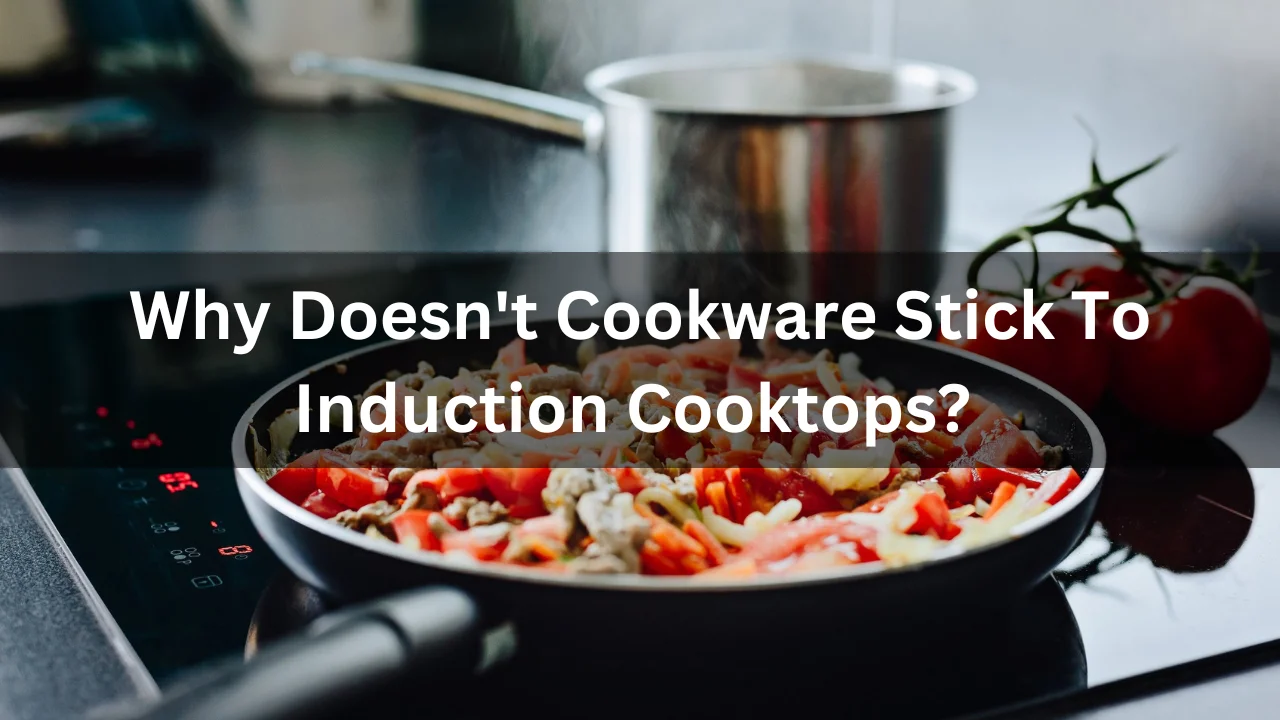Ever wondered why your favourite pots and pans glide effortlessly over your induction cooktop, seemingly defying the laws of physics? Imagine a kitchen where every sizzle and sear happens without a hitch, where the usual struggles of food sticking to your cookware are a distant memory.
In 2024, the magic behind this culinary wonder isn’t just about advanced technology. A sophisticated blend of science and design makes induction cooking a game-changer. But what’s the real reason behind this non-stick phenomenon? Is it just a matter of shiny new tech, or is there a deeper, more intriguing answer waiting to be uncovered?
Join me as we dive into the captivating world of induction cooktops and reveal why your cookware stays remarkably unstuck.
Table of Contents
The Science Behind Cookware and Induction
Induction cooking relies on a fascinating principle of electromagnetism. Unlike traditional cooktops that use gas or electric burners, induction cooktops generate heat directly within the cookware.
When you place ferromagnetic cookware stick on an induction surface, it creates an electromagnetic field. This invisible field interacts with the metal in your pan, generating friction and producing heat almost instantaneously.
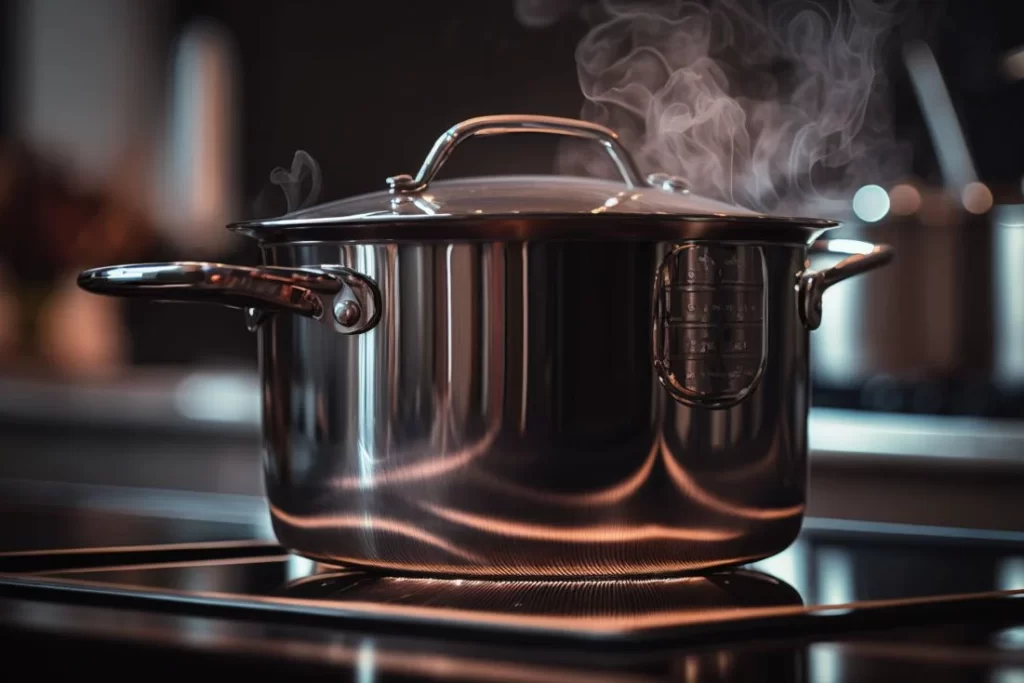
This process ensures even heating and minimises energy waste. Since only the pan gets hot, the cooktop stays cool.
The science behind this technology makes induction cooking efficient and safe for home chefs of all skill levels. Understanding these principles can enhance your cooking experience and help you choose the right tools for optimal results.
The Magnetic Field and Cookware stick Interaction
Induction cooking uses an invisible magnetic field to create heat directly in ferromagnetic cookware. When placed on the cooktop, electromagnetic waves activate molecules in the pan, generating heat almost instantly. This targeted heating is highly efficient, heating only the pan and not the surrounding air, resulting in less energy waste and quicker, precise cooking.
Why induction pans must be ferromagnetic?
Ferromagnetic materials are essential for efficient induction cooking because they generate significant heat due to their unique magnetic properties. Induction cooktops create Foucault currents in the cookware, which dissipate as heat. While any conductor can generate these currents, ferromagnetic materials, like iron and steel, have a smaller “skin depth” at the operating frequency of induction cooktops.
This smaller skin depth increases resistance, leading to more effective heat generation. Non-ferromagnetic materials like aluminium and copper require higher frequencies to achieve similar heating, making them less efficient on standard induction cooktops.
Which Metals Work Best for Induction Cooking?
Metals like cast iron, carbon steel, and certain stainless steels work best with induction cooktops because they are ferromagnetic. These metals effectively interact with the magnetic field generated by the cooktop, producing the necessary heat for cooking.
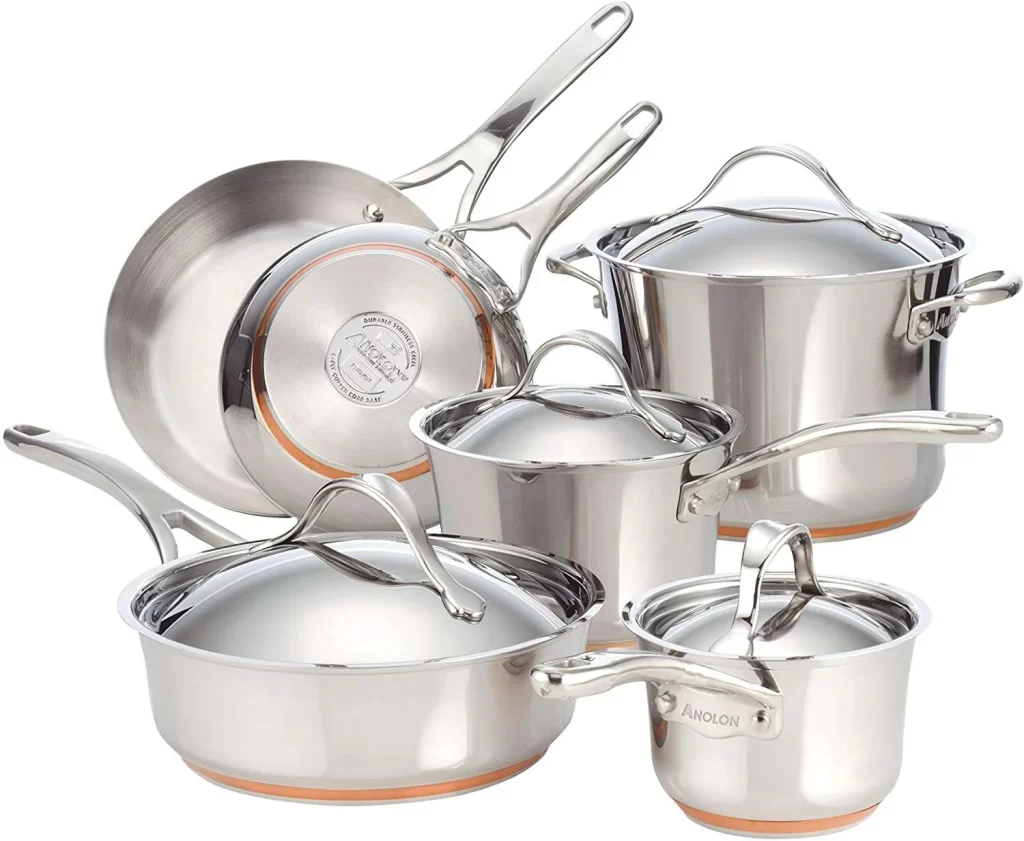
Cast iron and carbon steel are particularly efficient due to their high iron content, while stainless steel varies depending on its composition—only those with magnetic properties are suitable. Non-ferromagnetic metals like aluminium and copper do not work well unless they have a magnetic base or are used with specialised induction cooktops.
Cookware Design and Its Impact
Cookware design plays a crucial role in the effectiveness of induction cooking. The shape, thickness, and material of pots and pans can significantly influence their performance on an induction cooktop.
Flat-bottomed cookware ensures that maximum contact with the heating element. This direct interaction allows for even heat distribution, reducing hot spots that can cause food to stick.
Additionally, the thickness of the pan affects heat retention and responsiveness. Thicker materials may take longer to heat but often provide better stability once at temperature.
Another critical factor is handle placement. Ergonomically designed handles enhance usability and help maintain balance while cooking.
Moreover, aesthetic elements should be noticed; modern designs blend functionality with style, making your kitchen efficient and visually appealing.
The Role of Pan Bottoms in Induction Cooking
The bottom of a pan plays a crucial role in induction cooking. Unlike traditional stoves, induction cooktops rely on direct contact between the cookware stick and the surface.
For optimal performance, the pan’s base must be flat and smooth. This design enhances contact with the induction element, allowing for efficient heat transfer.
Thickness also matters. A thicker bottom helps distribute heat evenly, preventing hot spots that lead to sticking or uneven cooking.
Magnetic materials are essential. The ideal pans will have a ferromagnetic base that effectively interacts with the magnetic field generated by induction cooktops.
If your pans wobble or rock during use, you might face temperature control and heating issues. Ensuring your cookware stick has an appropriate design is critical to maximising efficiency while enjoying hassle-free cooking experiences.
Impact of Cookware stick Design on Induction Efficiency
The design of cookware plays a crucial role in how efficiently it performs on induction cooktops. A flat, smooth base ensures optimal contact with the cooktop surface, allowing heat to transfer evenly.
Cookware that features a thicker bottom can also enhance performance. It absorbs and distributes heat more effectively, preventing hotspots while cooking. This is especially important for tasks requiring precision, like sautéing or simmering.
Another factor is the shape of the pan’s sides. Wider pans allow for better heat circulation around the food, promoting even cooking results. Curved edges may limit this efficiency, making it harder to achieve consistent temperatures.
Moreover, ergonomic handles that remain cool during use contribute to safer handling without interrupting your culinary flow. Each design aspect intricately affects how well cookware interacts with induction technology and impacts the cooking experience.
Non-Stick and Induction: A Perfect Match?
Non-stick cookware has revolutionised the way we cook. It offers convenience, making it easy to prepare meals without the hassle of stubborn food residues. But how does this type of cookware fare on induction cooktops?
The magic lies in the coating. Non-stick surfaces often work seamlessly with induction technology, provided they have a ferrous base layer. When this is present, heat transfers efficiently across the surface.
However, it is crucial to ensure that your non-stick pans are explicitly labelled as induction-compatible. Some brands must pay more attention to this feature, which can lead to frustration during cooking sessions.
Another point worth mentioning is maintenance; while non-stick pans may resist sticking more effectively than others, proper care will extend their lifespan and performance on an induction cooktop. Using wooden or silicone utensils can prevent scratching and maintain that coveted smooth surface for years.
Non-Stick Cookware: How It Works with Induction
Non-stick cookware is famous for its convenience, but how does it function on induction cooktops? The secrets lies in its construction. Most non-stick pans have a ferromagnetic base, allowing them to interact with the magnetic field generated by the cooktop.
Turning on an induction stove creates an electromagnetic field that induces heat directly into the pan. This process means your food cooks evenly without relying on hot surfaces alone.
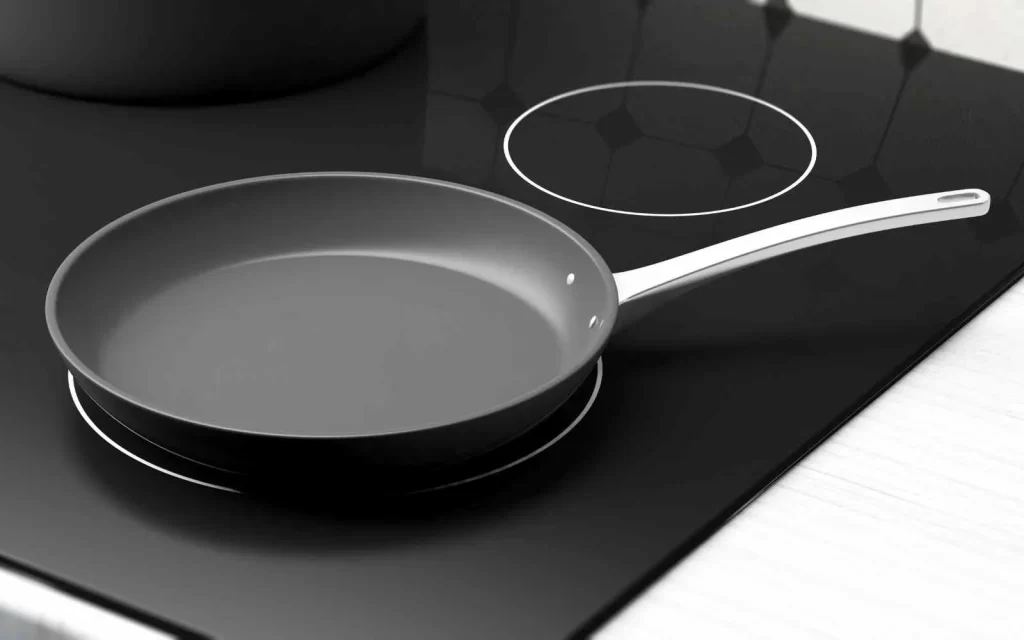
However, not all non-stick coatings are created equal. Some may interfere with heat distribution or durability when used over high temperatures. It’s essential to choose high-quality options explicitly designed for induction cooking.
Using non-stick cookware can simplify meal prep and clean-up while providing efficient heating. Ensure your chosen pieces have appropriate materials compatible with your induction stovetop’s requirements for optimal performance.
The Reason Food Is Always Sticking to Your Pans
Food sticking to your pans can be frustrating. It often happens due to a need for proper heat control. Food tends to cling stubbornly when the pan is not heated adequately or unevenly.
Another culprit might be the type of oil you use. Some oils have lower smoke points and break down quickly, leading to sticking issues. Choosing an oil with a higher smoke point can make a difference.
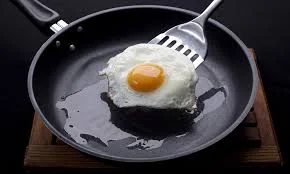
Cookware material also plays its part. Non-stick surfaces generally help prevent food from adhering, while stainless steel may require more attention during cooking.
Remember that patience is vital in cooking techniques like searing or browning meat. Allowing proteins time to form a crust before flipping can significantly reduce unwanted stickiness in cookware.
Tips and Best Practices for Induction Cooking
Induction cooking can be a game-changer in the kitchen, but mastering it requires some tips and tricks. First, ensure your cookware is induction-compatible. A simple magnet test can save you time and frustration.
When heating your pan, start on low to medium heat before adjusting. Induction cooktops respond quickly, so there’s no need for high settings unless necessary.
Always use flat-bottomed pans for even heating; this maximises contact with the surface and enhances efficiency.
Keep an eye on the temperature while cooking. With induction, food can go from simmering to scorching in seconds.
Wipe spills immediately after use to maintain cleanliness. It’s easier to clean when they’re fresh rather than baked-on messes later!
How do you cook without sticking?
Cooking without sticking requires a combination of proper technique, the right tools, and careful attention to heat control. Here are some tips to help prevent food from sticking to your cookware:
- Preheat the Pan: Ensure your pan is properly preheated before adding any food. A cold pan can cause to food on the stick. To check if the pan is hot enough, add a few drops of water; they should sizzle and evaporate quickly.
- Use the Right Amount of Oil or Fat: A thin, even layer of oil or fat on the pan’s surface creates a barrier between the food and the pan. Be sure to heat the oil before adding the food, which helps form a non-stick layer.
- Choose the Right Cookware: Non-stick pans are designed to prevent sticking, but these tips are essential for using stainless steel or cast iron. Over time, these pans can develop a natural or non-stick surface.
- Dry the Food Before Cooking: Moisture on the surface of food can cause it to stick, especially with proteins like meat or fish. Patting the food dry with paper towels before cooking helps to minimise this risk.
- Don’t Overcrowd the Pan: Overcrowding the pan lowers the temperature and causes the food to release moisture, leading to sticking. Cook in batches are necessary to maintain a consistent temperature.
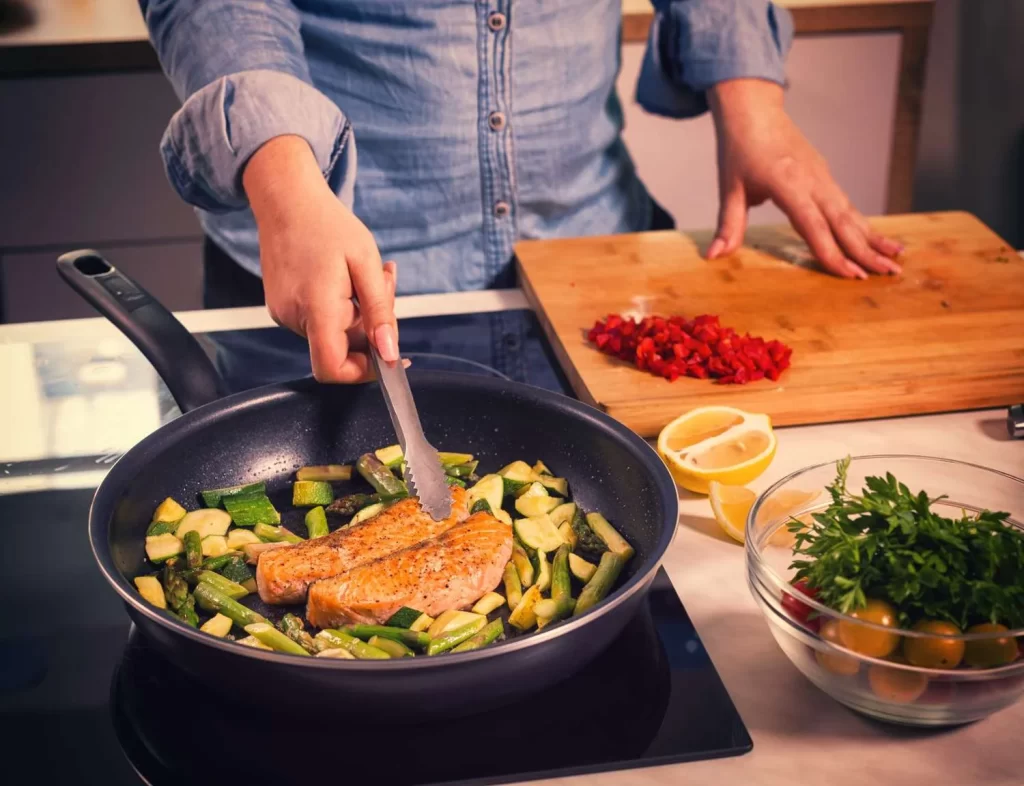
- Avoid Moving the Food Too Soon: Let the food cook undisturbed for a few minutes. Proteins like meat will naturally release from the pan when they are seared and ready to be flipped. If it sticks, it likely needs more time to cook.
- Use Proper Heat Settings: Cooking at too high or too low of a temperature can cause food to stick. Adjust the heat as necessary based on the type of food and the cookware you’re using.
- Deglaze the Pan: If food does stick, deglazing the pan with a small amount of liquid (like water, broth, or wine) while it’s still hot can help lift the stuck bits and prevent burning.
By following these tips, you can cook confidently and avoid the frustration of food sticking to your cookware.
How do you keep cookware from sticking?
To keep cookware from sticking, follow these key tips:
- Preheat the Cookware: Heat your pan before adding food. A hot pan helps prevent sticking. You can test if it’s ready by dropping a few water droplets in the pan; they should sizzle and evaporate quickly.
- Use Adequate Oil or Fat: Apply a thin layer of oil or fat to the pan’s surface. Heat the oil before adding food, as this creates a non-stick barrier. Choose oils with high smoke points, like canola or avocado, for the best results.
- Choose Non-Stick Cookware: Non-stick pans are designed to minimise sticking. Using stainless steel or cast iron, ensure they are well-seasoned or adequately coated.
- Dry Food Thoroughly: Moisture on the surface of food can cause sticking. Pat food dry with paper towels before cooking to help it release quickly from the pan.
- Avoid Overcrowding the Pan: Give food enough space in the pan. Overcrowding lowers the pan’s temperature and traps moisture, increasing the likelihood of sticking.
- Cook at the Right Temperature: Use appropriate heat settings. Too high or too low heat can cause sticking. Adjust as needed based on the food and pan you’re using.
- Let Food Cook Undisturbed: Allow food to cook for a few minutes without moving it. Once it forms a natural crust, it will release from the pan more easily.
- Deglaze the Pan: If food sticks, deglaze the pan with a liquid splash (such as water, broth, or wine). This can help lift stuck bits and prevent burning.
Following these steps can reduce sticking and make cooking more enjoyable and efficient.
Tips for Choosing the Best Cookware for Induction Cooktops
Choosing the right cookware for induction cooktops can elevate your cooking experience. First, look for pots and pans made from ferromagnetic materials like cast iron or stainless steel. These metals react well with magnetic fields.
Next, check the bottom of each piece. It should be flat to ensure proper contact with the cooktop surface. Uneven bottoms can lead to hot spots and uneven cooking.
Consider weight as well. Heavier cookware tends to provide better heat retention, which is crucial for tasks that require steady temperatures.
Don’t forget about handles! Opt for those that stay cool during cooking; this adds comfort and safety to your culinary adventures.
Read reviews before making a purchase. Real-life experiences often reveal insights not found in product descriptions.
How to Test if Your Cookware is Induction-Ready
To test if your cookware is induction-ready, follow these simple steps:
- Check the Manufacturer’s Information: Look at the bottom of the cookware or website for information about induction compatibility. Many modern pots and pans are labelled as induction-ready if they are compatible.
- Use a Magnet: Induction cooktops work with cookware made of magnetic materials. Take a magnet on place and it on the bottom of the cookware. If the magnet sticks firmly, the cookware is induction-compatible. The cookware won’t work on an induction stove if it doesn’t stick.
- Test on an Induction Cooktop: If you have access to an induction cooktop, place the cookware on the burner and turn it on. If the cooktop detects the pan and heats it, then the cookware is induction-ready.
- Check the Construction: Induction-compatible cookware typically has a magnetic base. Cookware made from materials like stainless steel or cast iron often works with induction cooktops, while aluminium and copper usually work only if they have a magnetic base.
- Look for an Induction Symbol: Some cookware is marked explicitly with an induction symbol—a series of concentric circles or a similar icon—indicating it is designed for induction cooking.
Using these methods, you can determine whether your cookware is suitable for induction cooktops.
How to Maintaining and Extending Cookware Life
To maintain and extend the life of your induction cookware, follow these best practices:
1. Choose Quality Cookware
- Material: Opt for high-quality materials like stainless steel or cast iron, which are durable and better suited for induction cooking.
- Flat Bottoms: Ensure the cookware has a flat, smooth bottom for optimal contact with the induction surface.
2. Clean Properly
- After Each Use: Wash cookware with mild soap and a non-abrasive sponge. Avoid harsh scrubbing to prevent scratches.
- Avoid Abrasives: Steer clear of steel wool or abrasive cleaners that can damage the surface.
- Dry Thoroughly: Dry cookware immediately after washing to prevent water spots and rust, especially on cast iron.
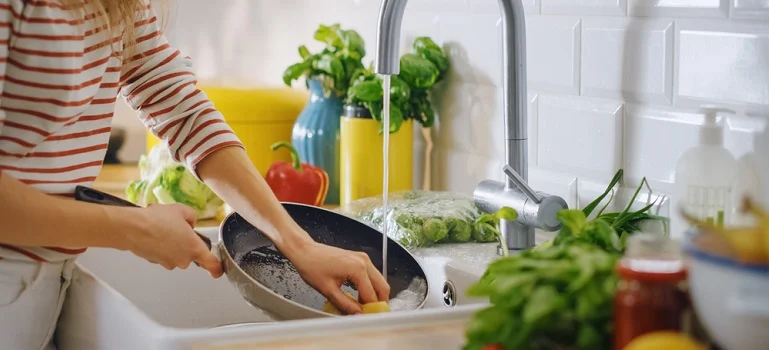
3. Prevent Scratches
- Use Cookware Wisely: Avoid dragging or sliding pots and pans on the induction cooktop. Lift them gently to prevent scratching the surface.
- Use Proper Utensils: Opt for wooden or silicone utensils to avoid damaging the cookware’s surface.
4. Avoid Overheating
- Use Appropriate Heat Settings: Induction cooktops heat quickly, so use lower settings to prevent overheating and potential warping of cookware.
- Monitor Cooking: Monitor your cookware to ensure it’s not subjected to excessive temperatures.
5. Store Properly
- Avoid Stacking: If stacking cookware, place protective layers (like paper towels) between pieces to prevent scratches.
- Keep Dry: Store cookware in a dry, cool place to avoid moisture buildup, which can lead to rust or corrosion.
6. Check for Warping
- Regular Inspection: Periodically check the bottom of your cookware for signs of warping. Cookware that is not flat can cause uneven heating and damage to the induction cooktop.
7. Handle with Care
- Avoid Sudden Temperature Changes: Don’t move cookware from a hot cooktop to cold water immediately, as sudden temperature changes can cause warping or damage.
By following these practices, you can ensure that your induction cookware remains in excellent condition, provides reliable performance, and extends its lifespan.
Related Articles:
Ultimate Guide To Pan Compatibility Of Induction Cooktop In 2024
Why Do Induction Stoves Make Those Annoying Clicks? 2024
Which Induction Cooking Temperature is preferable? Info 2024
Does Stainless Steel Cookware Work on Induction Stoves?
Conclusion
In conclusion, the unique relationship between cookware and induction cooktops is a fascinating blend of science and design. Induction cooking’s reliance on electromagnetic fields to directly heat ferromagnetic materials revolutionises how we experience cooking. This process ensures efficient heat transfer and minimises the usual sticking and uneven cooking issues.
Understanding the principles behind induction cooking helps select the right cookware, whether ferromagnetic metals like cast iron or stainless steel. Proper cookware design, including a flat and smooth bottom, enhances performance and reduces sticking, making your culinary adventures smoother and more enjoyable.
When designed with an appropriate ferrous base, non-stick cookware integrates seamlessly with induction technology, offering added convenience without compromising efficiency. Additionally, properly maintaining and caring for induction cookware can extend its lifespan and ensure continued optimal performance.
By leveraging these insights, you can make informed choices and enjoy the many benefits of induction cooking—where every meal is prepared with precision and ease, making kitchen time a pleasure rather than a challenge.

